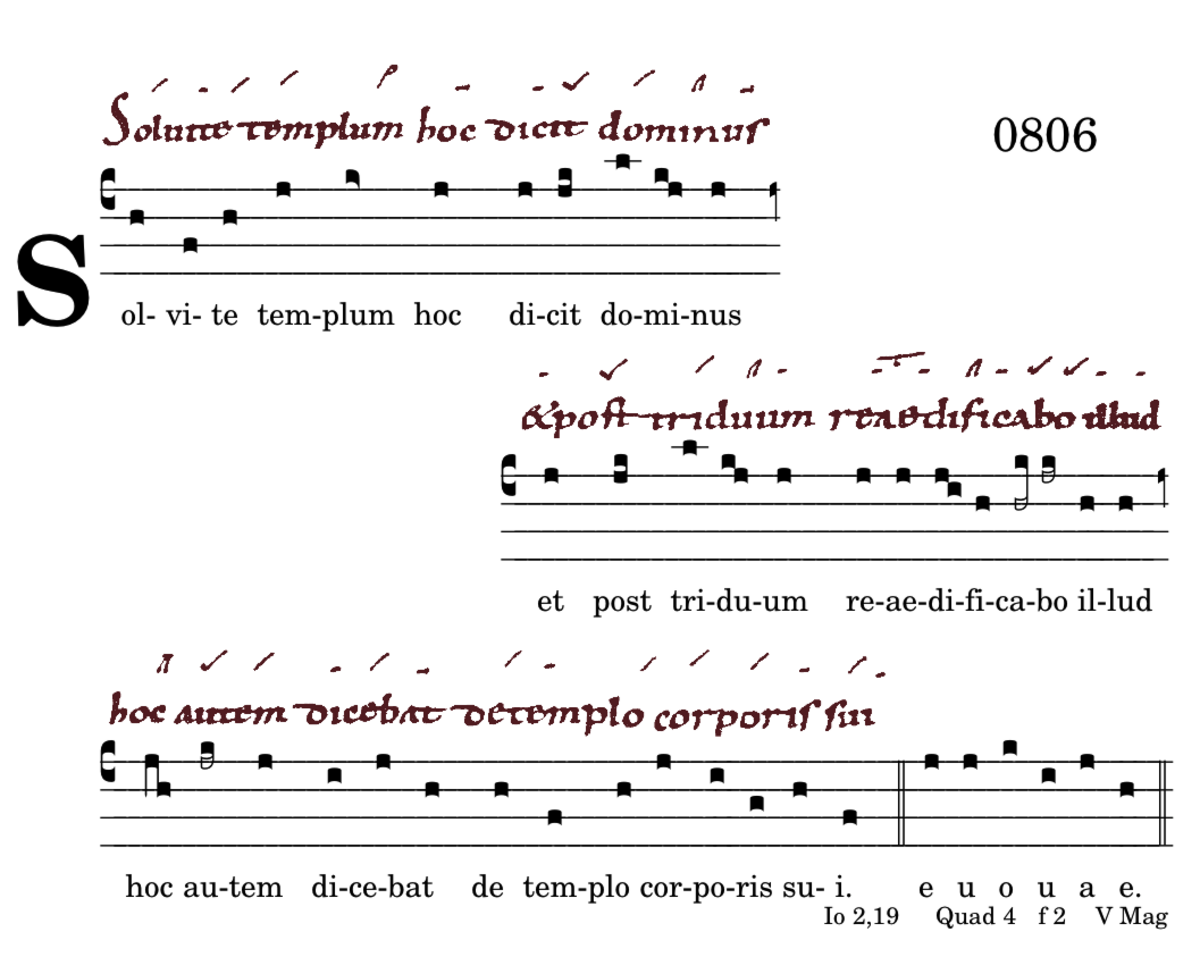🔘 IN GR TR AL OF CO xxxxx 1️⃣ 2️⃣ 0️⃣ 3️⃣ 4️⃣ ✅ 6️⃣ 7️⃣ 8️⃣ xxxxx AN RP IV alia
0806 AN Solvite templum hocModus 5
5INC
XXXX
„reaedificabo“ In MR ist dieses Schlüsselwort radiert. Codex Compiegne schreibt hier „excitabo“.
XXXX
7INC ReSi
„cor-po-ris sui“ Das AMn setzt hier ein si-be-molle („sa“) entgegen dem ursprünglichen „si“ im AM. Diese Entwicklung bei den jüngeren französischen Editoren in der Nachfolge der Solesmenser Schule ist ein typisches Zeichen von Tritonusphobie. Nur Wc (13.Jh) und Zw schreiben „sa“, Bv weicht dem si/sa-Problem durch Änderung der Melodie aus!
Tatsächlich gibt es keine Tristonusspannnung. Ab dem Text „Hopc autem dicebat“ mischt tonal der Tetrardus mit, die Melodie „do-si-sol“ ist im 8.Modus centotypisch. Erst das folgende „la“ wendet die Melodie zum 5. Modus zurück. Vor allem nach dem „si“ „di-cebat“ ist ein „sa“ nicht denkbar.
● Reißt diesen Tempel ab, spricht der Herr
und nach drei Tagen baue ich ihn wieder auf;
das aber sagte er vom Tempel seines Leibes.
● Tear down this temple, says the Lord
and after three days I will rebuild it;
This is what he said about the temple of his body.
5INC
XXXX
“reaedificabo” This keyword is erased in MR. Codex Compiegne writes “excitabo” here.
XXXX
7INC ReSi
“cor-po-ris sui” The AMn places a si-be-molle (“sa”) here in contrast to the original “si” in the AM. This development in the more recent French editors following the Solesmen school is a typical sign of tritone phobia. Only Wc (13th century) and Zw write “sa”, Bv avoids the si/sa problem by changing the melody!
In fact, there is no tristonus span. From the text “Hopc autem dicebat” onwards, the tetrardus intervenes tonally, the melody “do-si-sol” is centotypical in the 8th mode. Only the following “la” turns the melody back to the 5th mode. Especially after the “si” “di-cebat”, a “sa” is inconceivable.

